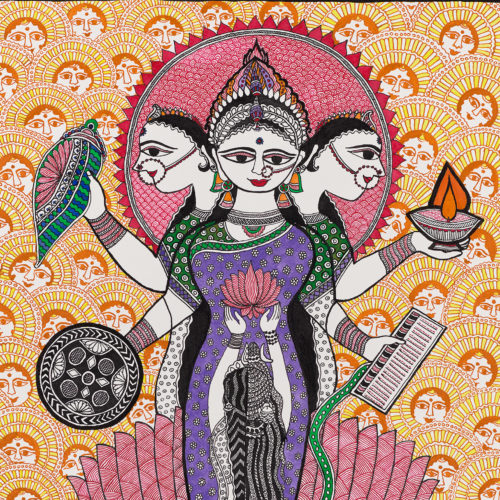Mithila, an ancient cultural region of India, lies primarily with the northeastern state of Bihar. While economically impoverished and provincial — its 40 million residents live primarily in small towns and rural villages — it has become a center of artistic production, in large part due to the establishment of the Mithila Art Institute in 2003.
In 1934, while surveying the damage caused by an 8.2 magnitude earthquake in Bihar state, a British civil servant spotted wall paintings inside the cracked-open marriage chambers and home shrines of the devastated houses and “discovered” what was a centuries-old tradition. What he saw were lush, colorful, intimate scenes: images of wedding rituals, a profusion of flowers and animals as symbols of fecundity and depictions of god and goddesses. A traditional domestic artistic tradition, one that had been passed down from mother to daughter and confined to the interior walls of the most intimate rooms of the home, suddenly became public.
Over the years, word of this dynamic tradition spread beyond the Mithila region. During a severe drought in 1966, Pupul Jayakar, director of the All India Handicrafts Board, conceived a plan to empower village women to use their artistic skills to earn money. She arranged for the women to be trained in painting on paper, shifting the mural tradition to a portable format that could be sold to tourists and at handicraft shops in India’s major cities.
Painting continues to be a catalyst for economic growth and social change, helping to break down boundaries of gender and caste. In 2003, the U.S.-based Ethnic Arts Foundation established the Mithila Art Institute. The free art school has a blind entrance competition, and applicants from across the region vie for a spot. By training students from all backgrounds, the institute enables the broader society to participate in a tradition that had once been confined to the upper castes. For many women, artistic success has translated into financial independence and community respect, enabling them to make life decisions for themselves and their families for the first time.


